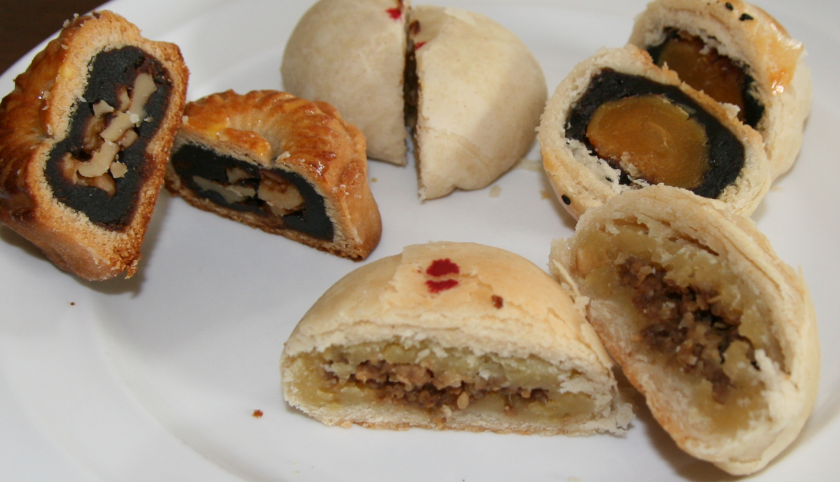
Back when I was growing up in Donegal in the late eighties, dinner was always at 4 PM, and all the staff and family sat down at my uncle’s restaurant to eat it even though it would be finished, promptly, at 4:30, when we opened for business. There will be always around three dishes, including a chou sim or other vegetable, drizzled with hot oil, soy, and oyster sauce. The cooks would whip up dishes that were never on our menu, because they were meant only for the Chinese who worked there.
Malay chicken curry with egg and potato was one of the most unforgettable dishes. A far cry the Chinese chicken curry that we served to our Irish customers, this curry was not thickened by flour or cream. It was made from chicken legs or wings, often with the bones left in, because the Chinese think the dark meat is the most flavorful part of the bird, and that it is meat cooked on the bone that is the most tender.
It is called a Malay curry because much Chinese curry originates from Malaysia, a country where Chinese, Indian, Southeast Asia, and Arab influences are prevalent. What’s more, it is an easy, no-fuss dish with a proper Asian premixed curry powder and curry leaves; after all, it is a dish that a chef makes for a hungry staff right before service. It is lively with spices, mellow with coconut milk, with potatoes that fall apart in the mouth. A bowl of Thai jasmine rice to sop up the broth is a must. For me, however, the prize in this curry has always been the egg yolk. The Chinese have always had a fondness of “braised eggs” – e.g. eggs that have been hard-boiled and left to steep in a flavorful sauce. The boiled eggs in the Malay chicken curry are simmered until burnished gold and perfumed, and the yolks are rich and surprising. If I was lucky as a kid, I got a whole egg to myself.
– Kwanghi Chan
Chicken Curry Malay Style with Potatoes, Hen Egg and Coconut Milk
Ingredients
For the chicken:
- 2 pieces (about 450g) boneless, skinless chicken leg meat, cut into chunks, or 450 g chicken wings cut in half and washed to get rid of loose bone.
- 1 ½ tbsp curry powder (I use East End Madras curry powder, found at most Asian markets and high end markets like Fallon and Byrne.)
- ½ tbsp chili powder
- For the curry:
- 1 large onion, chopped
- 2 shallots, sliced
- 4 sprigs of curry leaves* (see Note below)
- 6 tbsp curry powder
- 2 tbsp chili powder
- 3-4 tbsp water
- 400 ml coconut milk
- 3 cups chicken stock or water
- 5 floury potatoes (such as Rooster), boiled, peeled, and cut into chunks
- 8 hard-boiled eggs, peeled
- Sea salt to taste
- 5-6 tbsp peanut oil for cooking
Note: Curry leaves are fresh, green, and are often sold in sprigs that look like an overgrown fern frond. They are pretty amazing if you have never encountered them, for they are leaves that really, truly smell of curry! We find them often in the produce market at the Asia Market on Drury Street, where they are labeled in both Chinese and in English. If you can’t find them, they can be substituted with kaffir lime leaves, or be left out altogether, but they do give the dish a special sort of freshness.

Method
- Combine chicken chunks with 1½ tbsp of curry powder, ½ tbsp of chili powder, a big pinch of sea salt. Marinate for about 30 minutes.
- Mix the curry powder and chili powder with water to form a paste.
- In a heavy pot, heat 5-6 tbsp peanut oil. Add the chopped yellow onion, shallots, and curry leaves and pinch of salt. Cook until the onions are lightly brown in colour.
- Add the curry paste, and cook until fragrant. Mix in the marinated chicken and cook for about 10 minutes or until the chicken is almost cooked. Then add the coconut milk together with the chicken stock or water. Bring the curry sauce to a boil and then lower the heat and simmer for 10 to 15 minutes. Then add the eggs and potatoes and cook for about 15 to 20 minutes. Season the curry with sea salt.
Like most stews, this curry tastes better when reheated the next day.





